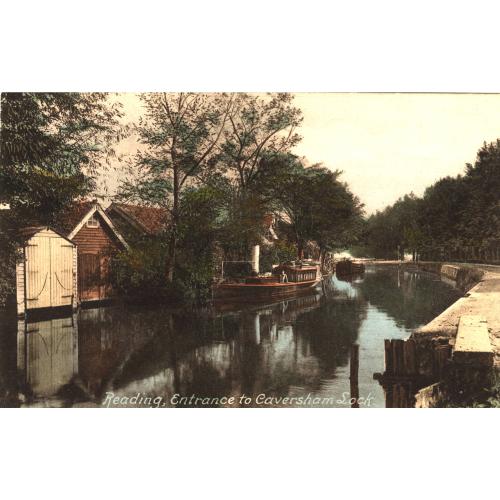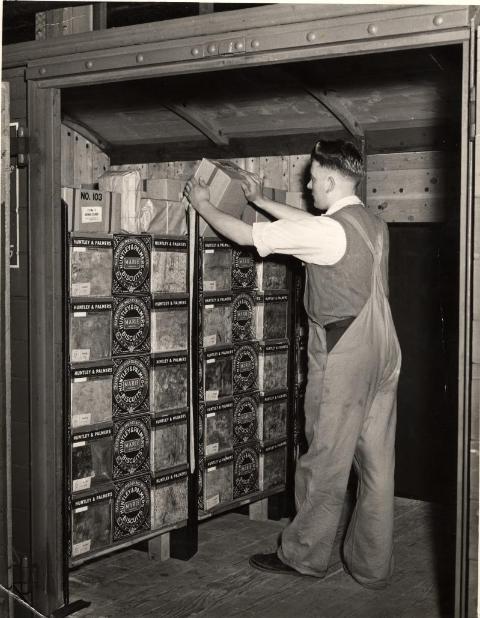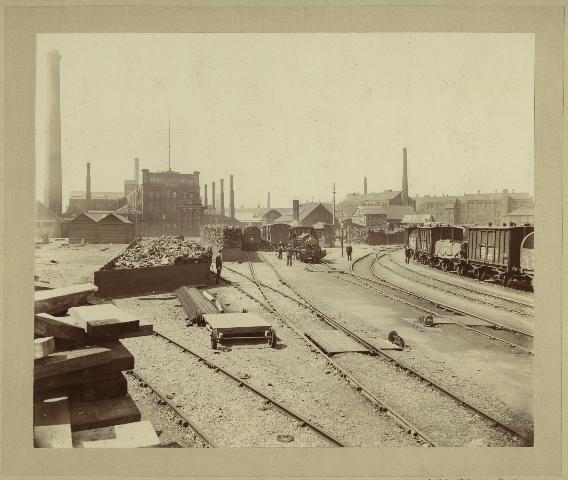During the early years of the partnership, most of the biscuits were sold in the local area and therefore transportation of the biscuits was not necessary. However as the business expanded Huntley & Palmers’ biscuits began to be sold all over the country. The factory's location for proved first class in view of its proximity to the waterways, the railway and the main highway of the Kings Road.
Transport by horse and cart
By the 1850s transportation of goods by horse and cart had already become an outdated method for anything other than local traffic. Travel was limited to the distance the horse could go in one day and in winter this distance was compromised by the state of the roads.

This photograph dates from the early twentieth century and shows a male employee with horse and cart outside the Kings Road factory. Although their use was dwindling, they remained a common sight until the 1930s. (REDMG : 1997.130.264)
Using the waterways
The Kennet and Avon Canal, opened in 1810, transported Huntley & Palmers biscuits to Bath and Bristol and along the Bristol Channel. The canal system was used in preference to roads since it was much cheaper and there was less risk of damage by vibration. However it was a very slow method of transport compared to the new railways.

Canal barges were slow compared to rail and the numerous locks, such as Caversham lock (pictured here around 1910), increased journey times and were not always suitable for all sizes of boats. (REDMG : 1976.36.12)
The Great British railways
Although in the early 1840s the firm used the railways for only a small proportion of its freight traffic, George Palmer had the foresight – or luck – to purchase a factory which was situated close to the railway. The Great Western Railways line connected Reading not only with London and Bristol, but also with Taunton, Oxford and Gloucester.

An employee, Kenneth Trimmings, loads biscuits onto a Huntley & Palmers train truck at the factory. Tins were stacked in such a way to prevent the labels rubbing, while loose items went on top to avoid them being squashed. (REDMG : 2003.251.4)
Private sidings
As the factory flourished much of its output was moved to rail and the company constructed its own private sidings within the factory. These sidings connected with three main railway lines to London. In order to work these, in 1875 the company purchased a pair of Black Hawthorn & Co of Gateshead, 20 ton locomotives.

This tank engine brought coal and timber train trucks to and took biscuit train trucks from Huntley & Palmers. The engine driver holding the oil can is Henry Tollervey (1855-1943). (REDMG : 1997.130.44)
The red brick factory and its tall chimneys became a landmark for passengers on the Great Western Railway. Such was the expansion in production at the factory that by the 1930s, in order to accommodate the incoming and outgoing goods, the sidings had increased to around 7.5 miles in length. Traffic to and from the complex was running at 15,000 wagons per annum.

A general view of the Huntley & Palmers railway sidings and factory looking South in 1899(REDMG : 1997.130.572)
In the next section, learn about the different machinery used throughout the factory.





